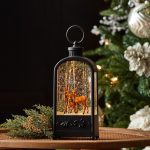Chinese vases have captivated collectors for centuries, their exquisite craftsmanship and rich history holding an undeniable allure. But with a vast market filled with both genuine antiques and modern reproductions, determining a Chinese vase’s value can be a daunting task. Fear not, for this guide equips you with the knowledge to navigate this world and potentially uncover a hidden treasure.

Delving into the Details: Signs of Authenticity
The first step lies in meticulous observation. Here’s a breakdown of key aspects to scrutinize:
- The Shape and Size: Chinese vases come in a diverse array of shapes, each reflecting a specific period or purpose. A well-proportioned, elegant form often indicates a more valuable piece. Research common shapes from different dynasties to narrow down the potential age.
- The Colors and Glaze: The quality of the pigments and glaze application speaks volumes. Look for vibrant, evenly applied colors and a smooth, unblemished glaze. Cracks in the glaze, known as crackles, can be desirable depending on the age and style, but large fissures or uneven glaze distribution suggest a less valuable piece.
- The Decoration and Imagery: Chinese vases are often adorned with intricate designs and motifs. These depictions can hold historical significance or represent symbolic animals and figures. Research common themes from various dynasties to gain clues about the vase’s origin. Pay close attention to the details – a well-defined, harmonious composition suggests a higher level of artistry.
- The Reign Mark: Many Chinese vases, particularly those from the imperial kilns, bear reign marks that identify the emperor under whose rule they were produced. Deciphering these marks, often in calligraphy, requires reference materials or expert consultation. A genuine reign mark, consistent with the style and decoration, strengthens the case for authenticity. However, be aware that not all authentic vases have reign marks, and forgeries can have convincing reproductions.
- Signs of Age: A genuine antique vase will often exhibit subtle signs of wear and tear accumulated over time. This could include minor nicks, a subtle patina (a discolored surface layer), or even a slight “rocking” on a flat surface due to age-related warping. However, exercise caution – significant damage or signs of repair are not necessarily indicators of inauthenticity, but they will certainly affect the value.

Beyond the Surface: Professional Appraisal
While a keen eye can reveal much, a professional appraisal remains the most definitive way to determine a Chinese vase’s value. Appraisers possess extensive knowledge of different dynasties, styles, and techniques. They can analyze the aforementioned aspects in greater detail, compare the piece to similar examples, and provide a more accurate assessment.
Finding the Right Appraiser:
- Reputation and Experience: Seek appraisers specializing in Chinese ceramics. Look for affiliations with reputable organizations like the Appraisers Association of America.
- Credentials: Inquire about the appraiser’s education and experience in appraising Chinese art.
- Area of Expertise: Ensure the appraiser has specific knowledge of the type of Chinese vase you possess. Dynasties and styles can vary greatly.

Preparing for the Appraisal:
- Gather Information: Collect any documentation or provenance (history of ownership) you might have for the vase.
- Take Clear Photos: Capture detailed images from various angles, highlighting the decoration, base, and reign mark (if present).
- Be Upfront: Provide the appraiser with all known details about the vase, including how you acquired it.
Understanding the Appraisal Process:
The appraiser will likely conduct a thorough examination of the vase, potentially utilizing tools like a magnifying glass or blacklight. They might consult reference materials and compare your piece to similar examples. Following the examination, they will provide a written report detailing their findings, including the estimated value and a rationale for their assessment.

Additional Considerations:
- Market Fluctuations: The value of Chinese vases can fluctuate based on market trends and collector preferences.
- Condition: The overall condition of the vase significantly impacts its value. Chips, cracks, and repairs can drastically reduce its worth.
- Provenance: A documented history of ownership can enhance a vase’s value, especially if it belonged to a notable collector or originated from a prestigious source.
Analyzing the shape, size, and proportion
When appraising a Chinese vase, the first impression matters. Here’s how analyzing its shape, size, and proportion can offer valuable clues about its origin and potential value:
- Shape Speaks Volumes: Chinese vases boast a rich vocabulary of forms. From the elegant simplicity of a moonflask to the majestic stature of a zun wine jar, each shape reflects a specific purpose and often ties to a particular dynasty. Researching common shapes from different eras can narrow down your vase’s potential age.
- Size Matters, But Not Solely: While a miniature imperial teacup holds more value than a large, mass-produced storage jar, size isn’t the only factor. Analyze the proportions within the form itself. A well-balanced, harmonious silhouette suggests a more refined piece. For example, a moonflask with a graceful curve and a neck perfectly proportioned to its body indicates a more skilled artisan.
- Proportion Unveils Purpose: Consider how the form might have been used. A wide-mouthed jar with a sturdy base likely served for storage, while a narrow-necked vase with a flared rim might have been designed for displaying delicate flowers. Understanding the intended function based on the shape and proportion can provide clues about its value and potential age.
Remember, analyzing shape, size, and proportion is just the first step. Combining these observations with other aspects like decoration, glaze, and markings will paint a clearer picture of your Chinese vase’s story.

Strategies for finding specialists with knowledge of Chinese ceramics
Locating a qualified appraiser or specialist to evaluate your Chinese vase is crucial for unlocking its true worth. Here are some strategies to guide your search:
Leveraging Professional Organizations:
- Appraisers Association of America (AAA): This esteemed organization maintains a directory of qualified appraisers across various specialties. Search for members specializing in Asian art or Chinese ceramics.
- The International Society of Appraisers (ISA): Similar to the AAA, the ISA offers a searchable database of appraisers with expertise in specific areas. Utilize their online directory to find appraisers qualified in Chinese art or decorative arts.
- Asian Art Associations: Regional or national associations dedicated to Asian art often have member directories. These can be valuable resources for identifying appraisers well-versed in Chinese ceramics. Consider contacting organizations like the Oriental Ceramic Society or the Society for Asian Art.
Consulting Auction Houses and Galleries:
- Reputable Auction Houses: Major auction houses specializing in Asian art often employ appraisers with extensive knowledge of Chinese ceramics. Contact their appraisal departments for recommendations or inquire if they offer individual appraisal services.
- Galleries Specializing in Asian Art: Galleries dealing in Chinese antiques or ceramics might have on-staff experts or maintain relationships with qualified appraisers. Reach out to reputable galleries and inquire about their appraisal services or recommendations.
Harnessing the Power of the Web:
- Online Appraiser Directories: Several online directories list appraisers by location and specialty. Utilize platforms like the American Society of Appraisers (ASA) or the National Association of Jewelry Appraisers (NAJA) to find appraisers in your area with expertise in Chinese ceramics.
- Online Research and Reviews: Search for appraisers specializing in Chinese ceramics within your region. Read online reviews and testimonials to gauge their experience and reputation.
Seeking Referrals from Trusted Sources:
- Museums and Cultural Institutions: Museums with collections of Asian art or specializing in Chinese ceramics might maintain relationships with qualified appraisers. Contact curators or research departments for recommendations.
- Antique Dealers and Collectors: Reputable antique dealers or collectors who specialize in Chinese ceramics may have established relationships with appraisers. Seek their recommendations for a reliable professional.
Remember:
- Credentials Matter: Verify the appraiser’s credentials, including memberships in professional organizations and relevant educational background.
- Area of Expertise: Ensure the appraiser specializes in Chinese ceramics, particularly the dynasty or style your vase might represent.
- Transparency is Key: Discuss the appraiser’s fees upfront and inquire about their appraisal process.
By following these strategies, you can increase your chances of finding a qualified specialist who can accurately assess your Chinese vase, unlocking its value and enriching its story.
By diligently examining your Chinese vase, consulting reference materials, and potentially seeking a professional appraisal, you can embark on a rewarding journey of discovery. Remember, the value of a vase transcends mere monetary worth. Its artistic merit, cultural significance, and potential connection to history can be just as enriching. So, delve into the world of Chinese ceramics, and let your vase unveil its story.










